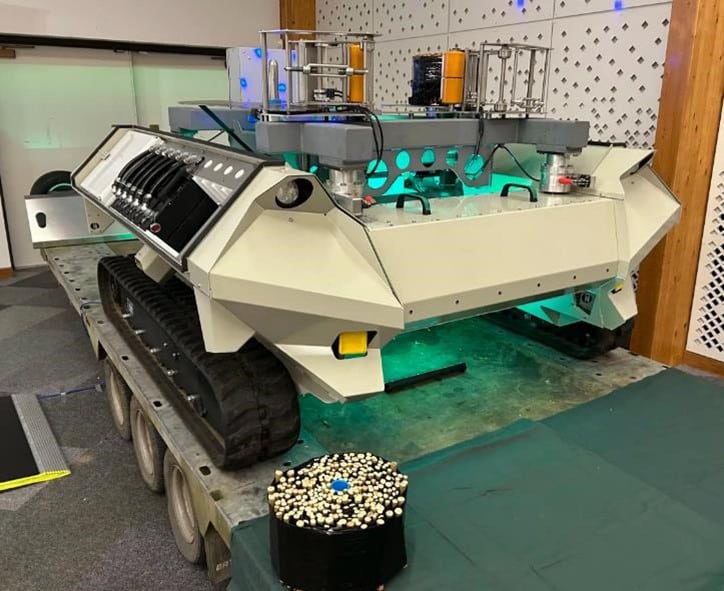Over the last three years, Jamie has been creating some amazing machines that could transform the willow sector. New cutting edge innovations have been developed with tracked and robotic technologies to automate both planting and rod harvesting procedures. Read this article to find out more: Net Zero Willow: Transforming UK Short Rotation Coppice.

The Net Zero Willow All Terrain Base Veicle and Robotic Planting Attachment.
It is possible to estimate the impact of NZW innovations by looking at the current situation regarding the size and value of the UK wood fibre market.
The UK wood fibre market
The most recent Forestry Statistics publication (Forest Research Sept 2024) indicates the following:
The key messages from these statistics are that
The challenge is to:
How NZW increase UK SRC production and reduce timber imports
SRC willow can tick all these boxes. In addition, the innovations created by NZW can help make this happen. However, in order to do this a market push and a market pull is required. The former needs to be done by well-designed incentive schemes. As more SRC willow is planted, demand will increase, providing the market pull. At some point there will be no further need for subsidies and at that point the wood fibre trade deficit will have been reduced, and more revenue will stay in the UK’s rural economy.
In Jamie’s application for funding he set out aspirations based on what would be achieved by 2030 and 2032. Unfortunately, in the last three years there have been no new incentives. We still hope that this will change, partly through our working with policy makers to provide our views and present evidence. As a result, our aspirations remain the same, but the timeframes are pushed back to 2033 and 2035.
Based on the scale-up potential, we envisage that by 2033 our innovations will be planting and harvesting 6,000 hectares of SRC per year and 10,000 hectares by 2035. This would mean a production of 395,000 green tonnes by 2033 and 658,000 green tonnes by 2035.
Assuming a typical bulk density for raw SRC chip of 225 kg/m3 then this would give a figure of 2.92 m m3 WRME. Hence, in just 10 years from today the three NZW innovations could potentially produce 29.5% of the current total annual UK timber production from an area of just 10,000 hectares. This increase in production could help reduce raw timber imports by 7.8%.
That sounds like a Willow Solution!
The Net Zero Willow project was funded by DESNZ as part of the Biomass Feedstocks Innovation Programme as part of the £1 billion Net Zero Innovation Portfolio.